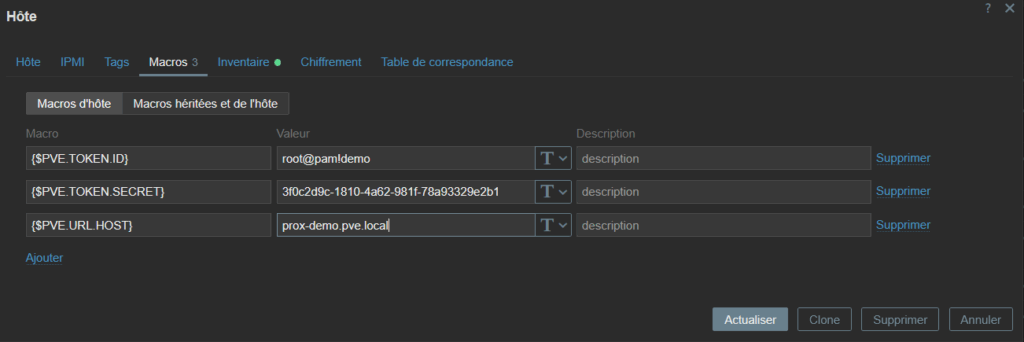By default, the Zabbix agent cannot monitor the status of virtual machines and containers running on a proxmox cluster. Therefore, we need to connect to the HTTP API to retrieve the values.
To do this, there is a template created that can be found here: https://www.zabbix.com/en/integrations/proxmox#proxmox. This is a template created by the community, it is not officially available now.
Go to the zabbix git repository to retrieve the .yaml, and import it into Zabbix.
Once added, link the " Proxmox VE by HTTP " template, and go to the "Macros" tab
Now open a new tab and connect to the Proxmox cluster. Go to the " Datacenter > Permissions > API Tokens " menu. Add a token with the " Add " button.
Uncheck " Privilege Separation " and specify a " Token ID ". Finally, click " Add ".

A new window then appears with the token ID and Secret to enter in Zabbix.

Now go back to the Zabbix server, and in the " Macros " tab, add 3 new macros:
- {$PVE.TOKEN.ID}: Contains the token ID
- {$PVE.TOKEN.SECRET}: Contains the secret
- {$PVE.URL.HOST}: Contains the IP address or FQDN of a cluster member

Finally, backup the host and watch the data come back up.





